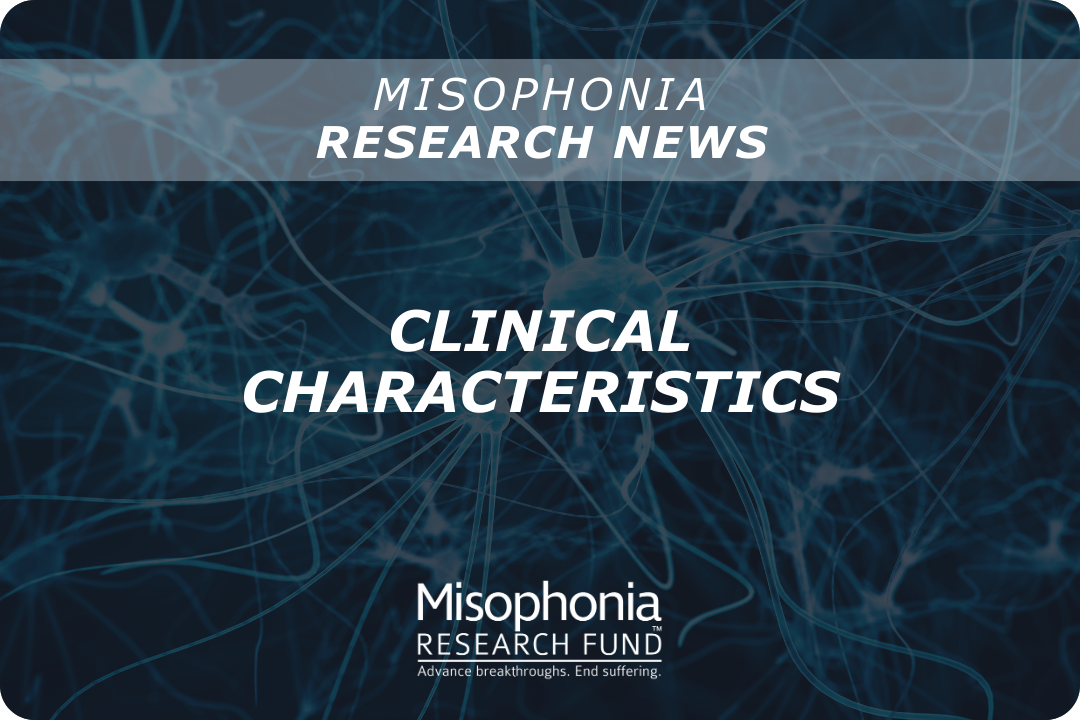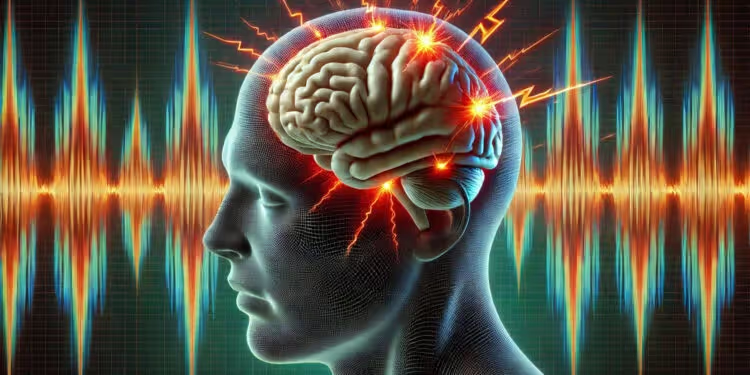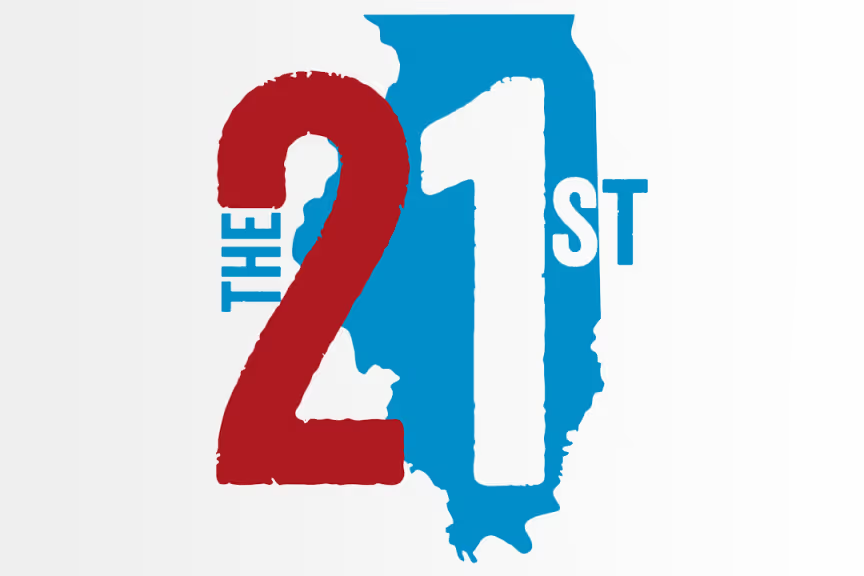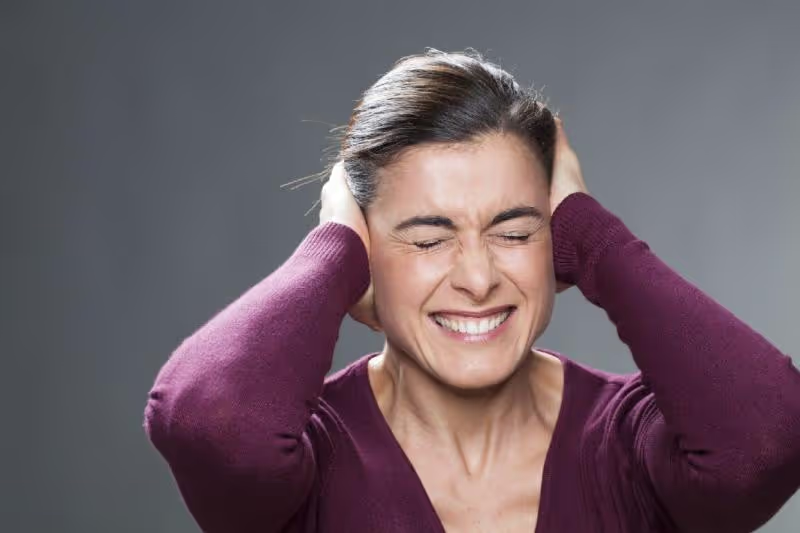Funded Research
The Misophonia Research Fund has committed more than $10,000,000 in grants to support outstanding research worldwide. We are pleased to present the recipients of our first five grant cycles.

2025 Recipients
In its 2025 grant cycle, the MRF funded a cohort of eight recipients for its longstanding Research Impact Award – projects focused on better understanding misophonia and investigating interventions for misophonia. The MRF also launched a new grant mechanism, the Data Discovery Award, through which it funded five investigators focused on acquiring essential initial datasets to seed larger future projects in misophonia.
Neural dynamics of auditory attention and arousal in misophonia
Yale School of Medicine
Investigating how attention and arousal interact during trigger sounds to inform better diagnostics and treatment approaches.
Neural circuit basis of misophonia in mice and humans
NYU Grossman School of Medicine
Building an animal model based on human research to better understand the brain processes involved in misophonia and explore new treatment options.
Semantic sound suppression using a neural network for misophonia
University of Washington
Leveraging AI to enhance noise-canceling headphones that selectively remove triggering sounds.
An implementation blueprint to guide shared decision making around misophonia innovations
University of Pennsylvania
Developing a practical guide to help clinicians apply the latest misophonia research in everyday care.
A parent-centered approach to optimize outcomes for youth with misophonia
Johns Hopkins University
Strengthening treatment outcomes by developing a parent-focused approach to support youth with misophonia.
Identifying and de-emphasizing statistical sound cues underlying auditory triggers and reduced tolerance to natural sounds
University of Connecticut
Using machine learning to pinpoint sound features that make misophonic triggers distressing and create tools to reduce their impact.
Examining momentary and longitudinal associations between misophonia and emotion regulation: an intensive experience sampling approach
Medical University of South Carolina
Illuminating how emotion regulation influences misophonia in daily life outside the clinic.
Efficacy and feasibility of an online acceptance based intervention for misophonia: a randomized controlled trial
Utah State University
Expanding the reach of an established therapeutic approach by translating it into a more accessible online format.
Objective measurement and establishment of attention to threat and avoidance as core components of misophonia
University of South Alabama
Advancing understanding of how attention to threat and avoidance contribute to misophonia.
Quantifying insula neurotransmitter concentrations in misophonia and non-misophonic clinical emotion dysregulation: an in-vivo spectroscopy study
Duke University
Exploring how brain chemistry differs in people with misophonia and is influenced by brain stimulation therapies.
Early markers of misophonia: an exploration of biological and environmental impact on the development and expression of misophonia
University of North Carolina at Greensboro
Identifying early-life factors that contribute to misophonia’s onset and severity to inform prevention and early intervention.
The apple of my eye: measuring, characterizing, and attenuating the pupil-linked misophonic stress response
University of Amsterdam
Developing accessible, objective tools to measure and understand the physiological stress response in misophonia.
2024 Recipients
In its 2024 grant cycle, the MRF funded a cohort of eight grant recipients. The newly funded projects span a wide range of disciplines, including neuroscience, genetics, psychology, audiology, and clinical research, ensuring a comprehensive approach to tackling the complexities of misophonia.
Pioneering genetic insights into misophonia
Yale University
Begin to identify potential risk genes, key biological pathways, and vulnerable developmental periods in misophonia.
Transcutaneous vagal nerve stimulation in misophonia: a randomized controlled intervention exploring underlying neurophysiological mechanisms
University of Sussex
Determine the therapeutic value for transcutaneous Vagal Nerve Stimulation in misophonia while informing the biological mechanisms of misophonia.
Characterizing misophonia using a self-regulation framework
Tel Aviv University
Identify whether the Reflective Impulsive Model (RIM) of self-regulation, a widely used model in various health conditions, can be utilized for misophonia and evaluate day-to-day functioning with misophonia.
Conceptualizing the substrates and sequelae of decreased sound tolerance as a developmental cascade
Vanderbilt University Medical Center
Determine key biological hallmarks of decreased sound tolerance in childhood, which can inform the development of early detection and early intervention strategies.
The role of mental imagery in misophonia
University of California Santa Cruz
Examining the role of visual stimuli in the psychophysiological response induced by trigger sounds and the potential application of altering these learned associations as an interventional strategy.
Psycho-physiological indicators of misophonia
Mass Eye and Ear
Will develop objective tools to measure physiological responses to trigger sounds and response severity to be used in diagnostic and treatment processes.
Longitudinal incidence and prevalence of misophonia in a nationally representative sample of U.S. adults
Duke University
Rigorously evaluate the prevalence of misophonia in adults in the U.S. and determine any changes to their symptom severity across one calendar year.
A transcranial magnetic stimulation approach to treat misophonia
Icahn School of Medicine At Mount Sinai
Test the therapeutic value of a widely-used, non-invasive brain stimulation therapy, while informing our understanding of brain region specific contributions to misophonia.
2023 Recipients
In the 2023 grants cycle, The Misophonia Research Fund awarded six grants to investigators who seek to characterize misophonia and develop new therapeutic strategies. This year’s funded projects join the 26 previously awarded scientific projects dedicated to building a fundamental understanding of misophonia, supporting the development of diagnostic tools, driving the rigor of misophonia clinical studies, and enhancing interdisciplinary science and collaboration.
An interdisciplinary study characterizing misophonia across nations and across the lifespan
University of Illinois at Urbana-Champaign
An assessment of misophonia across cultures aimed at identifying common mechanisms or key cultural differences that drive its development or experience.
Using neurostimulation to accelerate change in misophonia: A pilot study
Duke University
Identifying changes in misophonia symptoms in response to an intervention consisting of emotion regulation skills with or without brain neuromodulation.
Instructed cognitive reappraisal in reducing affective, behavioral, and psychophysiological symptoms of misophonia
University of Warsaw
Identifying changes in misophonia symptoms in response to a psychotherapeutic intervention called cognitive reappraisal.
Novel investigations of brain mechanisms for different triggers in misophonia
University of Iowa
Examining the specificity of brain responses to misophonia triggers and determining whether responses depend on the types of triggers.
Characterizing attention and memory deficits in misophonic individuals following trigger exposure
University of Southern Mississippi
An examination of how misophonia affects the cognitive processes underlying control of attention and memory.
2022 Recipients
In the 2022 grants cycle, The Misophonia Research Fund awarded six grants totaling approximately $2,200,000 over two years for the following research projects. Four grants support research to understand misophonia and develop treatments, and two grants support the development and validation of tools to assess and measure misophonia:
Characterizing How the Experience of Misophonia is Shaped by Environmental and Internal States
University of Western Ontario
This study utilizes a novel virtual environment to map changes in neural activity when recalling memory while triggers are present or absent in environments with varying trigger expectations.
Acceptance and commitment therapy (ACT) plus behavioral intervention for misophonia
Utah State University
This study seeks to apply a therapeutic technique to managing misophonic reactions through a twelve-session program, administered by a clinician, designed for long-term self-administration and retention.
Validation of a misophonia screener in pediatric primary care
University of South Florida
This study seeks to develop and validate both a screener and diagnostic interview in line with the consensus definition of misophonia for early determination of misophonia in pediatric patients.
Effects of hearing, seeing and imagining misophonia triggers: An fMRI investigation
University of South Carolina
This study addresses the underlying brain patterns of misophonic reactions by comparing the effects of trigger stimuli, when accompanied by a real or imagined cue, under auditory and/or visual conditions.
The balance between top-down and bottom-up attention in misophonia versus ASD
Massachusetts General Hospital
This study uses advanced neuroimaging techniques to address how the cognitive processes that deal with attention differ across neurotypical, autistic, and misophonic individuals when experiencing various sounds, including misophonic triggers.
Psychometric assessment of misophonia: A validation study of measurement tools for the severity of the disorder
King’s College London
This study seeks to evaluate existing misophonia assessments, fortify these tools based on these assessments, and surmise the prevalence of misophonia in a US population using validated and revised tools.
2021 Recipients
In the 2021 grants cycle, The Misophonia Research Fund approved seven grants totaling approximately $2,200,000 over two years for the following research projects:
A transdiagnostic investigation of decreased sound tolerance in adults
Vanderbilt University Medical Center
A study exploring the boundaries between misophonia and other related conditions categorized as Decreased Sound Tolerance through deep phenotyping and collection of multiple perceptual and physiologic variables.
Modifying emotional learning and memory in misophonia
Icahn School of Medicine at Mount Sinai
A study characterizing the role of associative learning in adults with misophonia with an emphasis on emotional learning and memory, aiming to explore whether associative learning and pharmacological interventions may alleviate misophonic reactions.
Associative learning in youth with misophonia
Johns Hopkins University
A study evaluating the associative learning processes underlying the development of misophonia through an immersive virtual reality environment with the goal of pinpointing how these processes differ in youth with misophonia.
Understanding why sounds may push our buttons: Combining psychoacoustic tools with brain imaging, towards effective intervention
Concordia University
A study exploring the neurobiological link between auditory triggers and the negative emotional states seen in misophonia by developing a large, open science database and characterizing behavioral and neurophysiological responses in misophonia.
Sounds linked with events
Carnegie Mellon University
A study investigating the audiological and visual factors that contribute to misophonia symptoms in order to understand the extent to which misophonia depends on the interpretation and distinct acoustic factors of the trigger.
Behavioral sensitization underlying misophonia and its illness course
Baylor College of Medicine
A study examining behavioral sensitization as a biological mechanism underlying misophonia and misophonia severity with the goal of establishing a relationship between misophonia severity and these underlying mechanisms.
A stakeholder-informed, large-scale study of the impact of misophonia on children and families
Baylor College of Medicine
A study identifying primary concerns and research priorities from those affected by misophonia, understanding clinical presentation and associated functional impairments, and evaluating the trajectory of misophonia over time in affected youth.
2020 Recipients
In the 2020 grants cycle, The Misophonia Research Fund approved seven grants totaling approximately $2,500,000 over two years for the following research projects:
Profiling misophonia: From heightened sensory sensitivity to intolerance of sounds
University of Sussex
A study utilizing novel tasks and behavioral measures to examine the hypothesis that atypical sensory sensitivity, including cognitive, perceptual and neural prerequisites, may underlie misophonia and predispose some people to develop misophonia.
Misophonia and high-level auditory and affective processing in adults and children
University of Nevada Las Vegas
A study investigating the possibility that certain characteristics or endophenotypes might make some individuals more likely to acquire misophonia, such as differences in high-level auditory processing.
Advancing the characterization and assessment of misophonia through laboratory and population-based research
University of Mississippi
A study evaluating the behavioral and physiological basis of misophonia symptomology as well as using a multi-tiered approach to expand the scientific basis of epidemiology, characterization and assessment of misophonia.
A multi-modal brain imaging study of misophonia examining its audiological and psychological aspects
University of Illinois at Urbana-Champaign
A study using imaging and behavioral measures to map the neural correlates and audiological and psychological aspects of misophonia, as well as understand misophonia in the context of audiological disorders such as tinnitus and hyperacusis.
Spatiotemporal characterization of misophonia using multimodal brain imaging
University of Florida
A study utilizing multimodal imaging techniques to evaluate the interaction between auditory processing, emotion, and sensory perception in misophonia in support of computational modeling-based predictions regarding the origin of aversive responses characteristic of misophonia.
Exploring the acceptability and efficacy of a transdiagnostic treatment for misophonia
Duke University
A study exploring the acceptability, feasibility, and efficacy of the existing Unified Protocol for Transdiagnostic Treatment of Emotional Disorders as it applies to misophonia, with the goal of developing an evidence-based treatment protocol.
Role of expectations and beliefs in driving brain activity in misophonia
University of Iowa
A study aiming to examine top-down factors relating to sound and its origin, as well as its role in driving cognitive operations that play a role in misophonic brain activity via two fMRI studies.
2019 Recipients
In the 2019 grants cycle, The Misophonia Research Fund approved a total of approximately $2,300,000 over two years in funding for the following research projects:
Misophonia in children: Impact, co-morbidities, and roadmaps to treatment
University of Sussex
A longitudinal study seeking to develop a screening tool for misophonia in children and adolescents; to better understand the impact of misophonia on schooling, thinking, personality and well-being; and to explore misophonia within the wider framework of children’s generalized sensory sensitivities.
Deep phenotypic characterization of misophonia in children and adolescents
Baylor College of Medicine
A comprehensive approach to understanding how misophonia presents in children and adolescents within the framework of NIMH’s Research Domain Criteria, focusing on the assessment of psychopathology through the underlying processes that contribute to differences.
Identifying the optimal neural target for misophonia interventions
Duke University
A study aiming to understand whether and how misophonia is distinct from other disorders of emotional dysregulation and assess the ability to use repetitive transcranial magnetic stimulation (rTMS) to non-invasively alter neural activity in individuals experiencing misophonia.
Transdiagnostic treatment for misophonia
University of South Florida
A study evaluating whether the Unified Protocols for Transdiagnostic Treatment of Emotional Disorders in Children and Adolescents can be used to treat misophonia in youth (8-16 years old) based on prior success in application to OCD, anxiety, and depression.
A comprehensive psychological, computational, and neural analysis of misophonia
Icahn School of Medicine at Mt. Sinai
A study characterizing misophonia in adults using computational and neural analyses, including a proposal to collect additional, higher resolution data and using machine learning methods to identify key features in the data.
Cross-sensory remapping for the treatment of misophonia
University of California Santa Cruz
A study to characterize how visual information modifies neural and behavioral responses to averse auditory stimuli and to test whether complementary sensory information can modify the neural representation of a misophonic trigger.
Grantees in the News
Funding Opportunities
Explore a variety of resources and impactful organizations for those seeking support for misophonia or looking to get involved.
Have Questions?
Interested in learning more about misophonia, our currently-funded research, available funding, or more?

%20(1).avif)





.avif)
.avif)




.avif)
















.avif)
.avif)

















.avif)